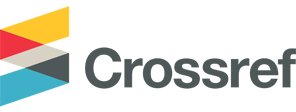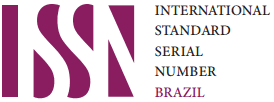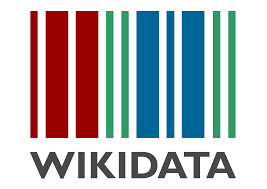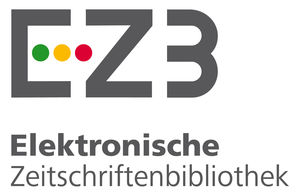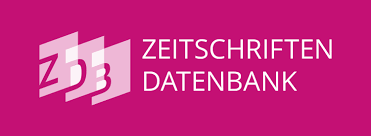Was Archaeopteryx able to fly? Authentic palaeontological practices in a museum programme
DOI:
https://doi.org/10.23925/1983-3156.2019v21i4p112-126Palavras-chave:
Archaeopteryx, Authentic palaeontological practices, museum programmResumo
Resumen
La educación científica auténtica ha recibido una mayor atención en los últimos años, pero aún no está claro en qué consiste la autenticidad. Aquí, utilizamos conceptos de la Teoría Antropológica de lo Didáctico para acercarnos a la autenticidad. Tomamos como punto de partida un programa de educación de un museo y lo analizamos para determinar en qué constituye su autenticidad. A continuación, utilizamos la Teoría de Situaciones Didácticas para construir un modelo de referencia que constituye una versión optimizada con respecto a la autenticidad del programa. También se discuten brevemente las implicaciones de nuestros resultados.
Abstract
Authentic science education has received increased attention in recent years, but it remains unclear what constitutes authenticity. Here, we use notions from the Anthropological Theory of the Didactic to approach authenticity. We take a point of departure in an existing education programme in a museum, and analyse it to pinpoint what constitutes its authenticity. We then use the theory of didactical situations as a way to construct a reference model; this reference model constitutes an authenticity-optimised version of the programme. We conclude by briefly discussing the implications of our findings.
Referências
Abrahams, I., & Millar, R. (2008). Does practical work really work? A study of the effectiveness of practical work as a teaching and learning method in school science. International Journal of Science Education, 30(14), 1945-1969.
Achiam, M. (2013). A content-oriented model for science exhibit engineering. International Journal of Science Education, Part B, 3(3), 214-232.
Achiam, M., & Marandino, M. (2014). A framework for understanding the conditions of science representation and dissemination in museums. Museum Management and Curatorship, 29(1), 66-82.
Achiam, M., Simony, L., & Lindow, B. E. K. (2016). Objects prompt authentic scientific activities among learners in a museum programme. International Journal of Science Education, 38(6), 1012-1035.
Ault, C. R., & Dodick, J. (2010). Tracking the footprints puzzle: The problematic persistence of science-as-process in teaching the nature and culture of science. Science Education, 94(6), 1092-1122.
Bain, R., & Ellenbogen, K. M. (2002). Placing objects within disciplinary perspectives: examples from history and science. In S. G. Paris (Ed.), Perspectives on object-centered learning in museums (pp. 153-169). Mahwah: Lawrence Erlbaum Associates.
Barbé, J., Bosch, M., Espinoza, L., & Gascón, J. (2005). Didactic restrictions on the teacher's practice: the case of limits of functions in Spanish high schools. Educational Studies in Mathematics, 59, 235-268.
Bock, W. (2013). The furcula and the evolution of avian flight. Paleontological Journal, 47(11), 1236-1244.
Bosch, M., & Gascón, J. (2006). Twenty-five years of the didactic transposition. ICMI Bulletin, 58, 51-65.
Brousseau, G. (1997/2002). Theory of didactical situations in mathematics. New York: Kluwer Academic Publishers.
Cheng, K. L., & Wong, S. L. (2014). Nature of science as portrayed in the physics official curricula and textbooks in Hong Kong and on the mainland of the People’s Republic of China. In C. Bruguière, A. Tiberghien & P. Clément (Eds.), Topics and Trends in Current Science Education: 9th ESERA Conference Selected Contributions (pp. 519-534). Dordrecht: Springer.
Chevallard, Y. (1991). La transposition didactique: Du savoir savant au savoir enseigné. [Didactic transposition: From scholarly knowledge to taught knowledge]. Grenoble: La Pensée Sauvage, Editions.
Chevallard, Y., & Bosch, M. (2013). Didactic transposition in mathematics education. In S. Lerman (Ed.), Encyclopedia of Mathematics Education. Berlin: Springer.
Chinn, C. A., & Malhotra, B. A. (2002). Epistemologically authentic inquiry in schools: A theoretical framework for evaluating inquiry tasks. Science Education, 86, 175-218.
Clément, P. (2006). Didactic transposition and the KVP model: Conceptions as interactions between scientific knowledge, values and social practices. Paper presented at the ESERA Summer School (July 15-22), Braga, Portugal.
Crawford, B. A. (2014). From inquiry to scientific practices in the science classroom. In N. G. Lederman & S. K. Abell (Eds.), Handbook of research on science education (pp. 515-541). New York: Routledge.
Danish Agency for Culture. (2009). Museernes læringspotentialer - Kortlægning af museernes undervisningsaktiviteter til grundskoler og ungdomsuddannelser. [The learning potential of museums - Mapping the educational activities of museums at the primary and upper secondary school level]. Copenhagen: Danish Agency for Culture.
European Commission. (2007). Science Education NOW: A renewed Pedagogy for the Future of Europe. Luxembourg: Office for Official Publications of the European Communities.
Falcão, D., Colinvaux, D., Krapas, S., Querioz, F. A., Alves, F., Cazelli, S., Gouvêa, G. (2004). A model-based approach to science exhibition evaluation: a case study in a Brazilian astronomy museum. International Journal of Science Education, 26(8), 951-978.
Feduccia, A. (1993). Evidence from claw geometry indicating arboreal habits of Archaeopteryx. Science, 259(5096), 790-793.
Fensham, P. J. (2001). Science content as problematic - Issues for research. In H. Behrendt, H. Dahncke, R. Duit, W. Gräber, M. Komorek, A. Kross, & P. Reiska (Eds.), Research in science education - Past, present, and future (pp. 27-41). Dordrecht: Kluwer Academic Publishers.
Frodeman, R. (1995). Geological reasoning: Geology as an interpretive and historical science. Geological Society of America Bulletin, 107(8), 960-968.
Gatesy, S. M., & Dial, K. P. (1996). From frond to fan: Archaeopteryx and the evolution of short-tailed birds. Evolution, 50(5), 2037-2048.
Gatesy, S. M., & Middleton, K. M. (2007). Skeletal adaptations for flight. In B. K. Hall (Ed.), Fins into limbs: Evolution, development, and transformation (pp. 269-283). Chicago: University of Chicago Press.
Goslow, G. E., Jr., Dial, K. P., & Jenkins, F. A., Jr. (1990). Bird flight: Insights and complications. Bioscience, 40(2), 108-115.
Gray, R. (2014). The distinction between experimental and historical sciences as a framework for improving classroom inquiry. Science Education, 98(2), 327-341.
Irez, S. (2016). Representations of the nature of scientific knowledge in Turkish biology textbooks. Journal of Education and Training Studies, 4(7), 206-220.
Kershaw, D. R. (1988). Animal diversity. London: Chapman & Hall.
Ladkin, N., Johnson, E., Baker, R. J., & Chatterjee, S. (2010). The use of collections in research and teaching at the Museum of Texas Tech University. University Museums and Collections Journal, 3, 127-135.
Livingstone, D. N. (2003). Putting science in its place. Geographies of scientific knowledge. Chicago: The University of Chicago Press.
Marandino, M. (2004). Transposition or recontextualisation? On the production of knowledge in education in science museums. Revista Brasileira de Educação, 26, 95-108.
Merriam-Webster Online Dictionary. (2015). Retrieved from http://www.merriam-webster.com/dictionary
Ministry of Education. (2010). Bekendtgørelse om uddannelsen til studentereksamen. [Executive order regarding upper secondary school]. Lovbekendgørelse nr. 692. [Executive order no. 692]. Retrieved from https://www.retsinformation.dk/Forms/ R0710.aspx? id=132647 - B14
Mortensen, M. F. (2010). Museographic transposition: The development of a museum exhibit on animal adaptations to darkness. Éducation & Didactique, 4(1), 119-137.
National Research Council. (2012). A framework for K-12 science education: Practices, crosscutting concepts, and core ideas. Washington, DC: National Academies Press.
Natural History Museum of Denmark. (2013a). Samlinger. [Collections]. Retrieved from http://snm.ku.dk/samlinger/
Natural History Museum of Denmark. (2013b). Undervisningstilbud til gymnasieklasser. [Education programmes for upper upper secondary school]. Retrieved from http://snm.ku.dk/skole_og_ gymnasietjenesten/ gymnasieportalen/undervisning/
Norberg, U. M. (1995). How a long tail and changes in mass and wing shape affect the cost for flight in animals. Functional Ecology, 9(1), 48-54.
Olson, S. L., & Feduccia, A. (1979). Flight capability and the pectoral girdle of Archaeopteryx. Nature, 278(5701), 247-248.
Ostrom, J. H. (1975). The origin of birds. Annual Review of Earth and Planetary Sciences, 3, 55-77.
Ostrom, J. H. (1979). Bird flight: How did it begin? Did birds begin to fly “from the trees down” or “from the ground up”? Reexamination of Archaeopteryx adds plausibility to an “up from the ground”s origin of avian flight. American Scientist, 67(1), 46-56.
Padian, K., & Chiappe, L. M. (1998). The origin and early evolution of birds. Biological Reviews, 73(1), 1-42.
Pagliarini, C. d. R., & Silva, C. C. (2007). History and nature of science in Brazilian physics textbooks: some findings and perspectives. Paper presented at the Ninth International History, Philosophy and Science Teaching Conference (June 24-28), Calgary, Canada.
Rudolph, J. (2007). An inconvenient truth about science education. The Teachers College Record. Retrieved from http://www.tcrecord.org
Sharma, A., & Anderson, C. W. (2009). Recontextualization of science from lab to school: Implications for science literacy. Science & Education, 18(9), 1253-1275.
Simonneaux, L., & Jacobi, D. (1997). Language constraints in producing prefiguration posters for a scientific exhibition. Public Understanding of Science, 6, 383-408.
von Bonin, G. (1946). Types and similitudes. An enquiry into the logic of comparative anatomy. Philosophy of Science, 13(3), 196-202.
Vesterinen, V.-M., Aksela, M., & Lavonen, J. (2013). Quantitative analysis of representations of nature of science in Nordic upper secondary school textbooks using framework of analysis based on philosophy of chemistry. Science & Education, 22(7), 1839-1855.
Wellnhofer, P. (2004). The plumage of Archaeopteryx: feathers of a dinosaur. In P. J. Currie, E. B. Koppelhus, M. A. Shugar, & J. L. Wright (Eds.), Feathered dragons: Studies on the transition from dinosaurs to birds (pp. 282-300). Bloomington: Indiana University Press.
Wilcove, D. S., & Eisner, T. (2000). The impending extinction of natural history. Chronicle of Higher Education, 15, B24.
Woodcock, B. A. (2014). “The scientific method” as myth and ideal. Science & Education, 23(10), 2069-2093.
Downloads
Publicado
Como Citar
Edição
Seção
Licença
Autores que publicam nesta revista concordam com os seguintes termos:- Autores mantém os direitos autorais e concedem à revista o direito de primeira publicação, com o trabalho simultaneamente licenciado sob a Licença Creative Commons Attribution que permite o compartilhamento do trabalho com reconhecimento da autoria e publicação inicial nesta revista.
- Autores têm autorização para assumir contratos adicionais separadamente, para distribuição não-exclusiva da versão do trabalho publicada nesta revista (ex.: publicar em repositório institucional ou como capítulo de livro), com reconhecimento de autoria e publicação inicial nesta revista.
- Autores têm permissão e são estimulados a publicar e distribuir seu trabalho online (ex.: em repositórios institucionais ou na sua página pessoal) a qualquer ponto antes ou durante o processo editorial, já que isso pode gerar alterações produtivas, bem como aumentar o impacto e a citação do trabalho publicado (Veja O Efeito do Acesso Livre).


